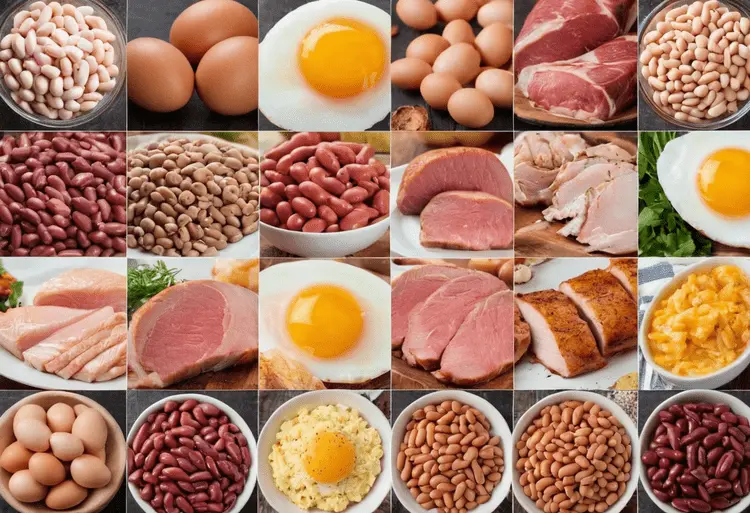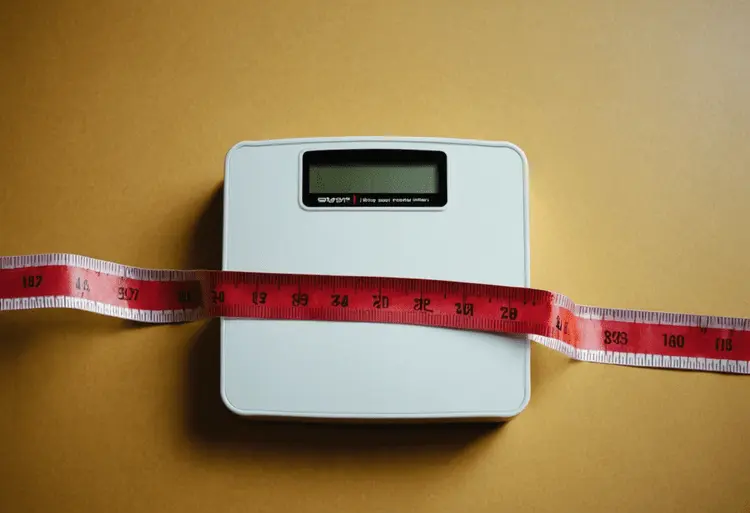Protein utilization might be the missing piece in your fitness puzzle. You’re dedicated to your protein intake, but are you truly maximizing its potential?
It’s not just how much protein you consume, but how well your body actually uses it. Factors like protein quality, digestion, and individual needs all play a role in protein utilization.
This guide will dive into the science of protein utilization, net protein utilization, protein efficiency, protein absorption, and protein digestibility. You’ll learn how to maximize your protein intake for optimal muscle growth, fat loss, and overall health.
Key Takeaways on Protein Utilization
- It’s about quality, not quantity
- Protein types matter (complete/incomplete)
- Meal timing is key
- Focus on gut health
- Individual needs vary
Table of contents
Introduction

What is Protein Utilization?
Ever feel like you’re eating plenty of protein, but not seeing results? The problem might not be how much protein you consume, but how well your body utilizes it. Protein utilization is how efficiently your body breaks down and uses that protein for vital functions.
Why Understanding Protein Utilization Matters
Is maximizing your protein utilization the missing piece of the puzzle? It could be! Optimized protein utilization is essential for:
- Building and repairing muscle
- Burning fat
- Strong immune function
- Overall health and well-being
Think about it: you could be pouring in top-quality protein, but if your body struggles to use it, you’re missing out on those hard-earned gains. Let’s dive deeper and see how you can make every gram of protein count!
So, what factors determine how well you utilize protein? Let’s find out! Buckle up – here’s where things get interesting.
We’ll delve into the world of complete vs. incomplete proteins and uncover how something called a “Biological Value” impacts how your body gets the most out of your protein intake.
Let me know – are you ready to become a protein utilization pro? Leave a comment below or tag me on social media!
Understanding protein utilization is the first step – unlock your full potential by determining your ideal protein intake. Our Protein Intake Recommendations guide will show you how.
Factors Impacting Protein Utilization
Okay, you’re eating enough protein, but is your body actually using it to its fullest potential? Several factors can throw a wrench in your protein utilization. Let’s explore them!
Protein Quality
Ever heard of complete and incomplete proteins? This is key for protein utilization. Complete proteins supply all the essential amino acids your body can’t make. Think animal sources like meat, fish, dairy, and eggs.
Incomplete proteins, often from plants, lack one or more essential amino acids.
- Is a plant-based diet a dealbreaker for protein utilization? Not necessarily! Combining different plant proteins creates a complete picture.
Amino Acid Profile
Think of protein as a chain of building blocks called amino acids. Your body needs a full set of these blocks, especially the nine essential ones. Leucine, an essential amino acid, plays a major role in signaling muscle growth.
- Curious about leucine content in foods? Get the scoop on Examine.com, a trusted resource on food analysis.
Dietary Factors
Protein doesn’t work in a vacuum. Carbs and fats influence how your body processes it. A balanced diet ensures everything’s working in sync.
And what about calories? If you’re not eating enough, your body might break down protein for energy instead of using it to build tissue. Yikes!
- Is a calorie deficit bad news for protein utilization? You bet! Insufficient energy intake can hinder muscle growth.
Individual Factors
Protein utilization isn’t one-size-fits-all. Your age, how hard you train, and your overall health play a role. As we age, our bodies naturally become less efficient at using protein. Stress can also throw things off balance.
- Want to learn more about how digestion affects protein use? Check out this resource by the National Institutes of Health (NIH).
Strategies to Enhance Protein Utilization

Protein Timing and Distribution
Think your protein intake is good enough? Think again! When you eat your protein could be just as important as how much you eat. Spreading your protein intake throughout the day ensures your body has a steady supply of amino acids to build and repair tissues.
Aim for 20-30 grams of protein per meal, spaced 3-4 hours apart. Is maximizing protein utilization for muscle growth important to you? Then don’t neglect protein before and after your workouts. This primes your body for growth and helps speed up recovery.
Combining Protein Sources
Not all protein sources are created equal. Want to get the most out of your meals? Try strategically combining different protein sources, especially if you follow a plant-based diet. This ensures you get all the essential amino acids your body needs.
Here’s how:
- Combine grains and legumes: Think classic combos like rice and beans, or lentil soup with whole-wheat bread.
- Mix nuts and seeds with plant protein: Add a sprinkle to salads or yogurt for an extra amino acid boost.
Food Preparation
Did you know how you cook your food can impact protein utilization? Overcooking meat can make the proteins tougher and harder to digest. Opt for gentler methods like poaching, slow cooking, or sous vide for optimal protein absorption.
Raw vegetables sometimes contain compounds that interfere with protein digestion. Steaming or roasting can help break these down, making protein easier for your body to utilize. For more information on how digestion impacts nutrient absorption
Supplementation
While whole foods should be the foundation, supplements can offer a boost in specific situations. Whey protein, known for its rapid absorption, is a popular post-workout choice. Branched-chain amino acids (BCAAs) can provide a direct dose of the muscle-building blocks.
Is supplementation right for you? It depends on your goals and current diet. For personalized recommendations that work for your lifestyle, check out this guide on Precision Nutrition: practical protein strategies: [invalid URL removed].
Let’s get this protein party started! How are you currently maximizing protein utilization? Share your tips below or tag me on social media!
Measuring Protein Utilization
Want to know if you’re truly getting the most out of your protein intake? It’s time to talk about measuring protein usage. Sure, you track protein grams, but is your body actually using them?
Let’s dive into the methods used to assess how well your body processes protein:
- Nitrogen Balance: This method tracks nitrogen intake (protein) vs. nitrogen loss (urine, sweat, etc.). Positive balance means you’re retaining nitrogen for muscle building. But, it has limitations and doesn’t tell the whole story about protein usage.
- Biological Value (BV): This ranks protein sources based on how much nitrogen is absorbed and retained. Eggs have a near-perfect BV score of 100! While this gives us an idea of protein quality, it doesn’t factor in how cooking or combining foods might change things.
- Net Protein Utilization (NPU): This is a more nuanced measurement, considering both protein digestibility and its amino acid profile. Think of it as the percentage of protein you eat that your body actually uses.
Important note: While these methods exist, there’s no perfect at-home test for protein utilization. Factors like your overall diet, health, and even stress levels play a part.
Want a deeper dive into protein digestion? Check out this resource from the National Institutes of Health (NIH). Or, if you’re interested in comparing the amino acid profiles of your favorite foods, Examine.com is a comprehensive database.
Putting It All Together
Okay, you understand the science of protein utilization. But how do you translate that into action? How can you make sure your body is soaking up all that muscle-building goodness? Let’s break it down.
Sample Meal Plans
Think of protein utilization like a puzzle. Here are a few sample meal ideas with strong protein usage in mind:
- Breakfast: Oatmeal with whey protein powder, berries, and nuts.
- Lunch: Grilled chicken salad with mixed greens, quinoa, and a light vinaigrette dressing.
- Snack: Greek yogurt with fruit and a handful of almonds.
- Dinner: Lentil soup, a side of brown rice, and a piece of baked fish.
Note: These are just examples – get creative! The key is to strike a balance between high-quality protein sources, complex carbs, and healthy fats throughout the day.
Lifestyle Factors

Food is vital, but don’t forget the bigger picture! Is your body positioned to use that protein effectively? Here’s what matters:
- Sleep: Aim for 7-9 hours. Sleep deprivation messes with hormones that regulate protein synthesis.
- Stress: Manage it! Chronic stress can hinder protein usage. Find stress-relief that works for you.
- Overall Diet: Even with perfect protein, an unhealthy diet will sabotage your progress. Eat lots of fruits, vegetables, and whole grains.
Unlocked the secret of protein utilization? Now, dive deeper! “Protein Metabolism Explained” unveils the fascinating science behind how your body actually uses protein for muscle building, health, and beyond.
Your Protein Utilization Questions Answered
Several methods exist, like Nitrogen Balance, Biological Value (BV), and Net Protein Utilization (NPU).expand_more Each has its limitations, so it’s often a combination of assessments.
Your body breaks down protein into amino acids.expand_more These amino acids are then used as building blocks for muscle growth, repair, enzymes, hormones, and more
Whey protein scores highly due to its fast absorption and complete amino acid profile. Eggs are another excellent choice. However, the ‘best’ protein can depend on your individual needs.
Dietary protein utilization refers to how much of the protein you eat is actually absorbed and used by your body for various functions.
Nope! Protein utilization – how well your body uses that protein – is just as important as how much you eat.
It can! Cooking sometimes improves protein digestion, but overcooking has the opposite effect.
Absolutely! Spreading your protein throughout the day helps your body use it most effectively.
Definitely! A healthy gut is key for proper protein digestion.
Combine different plant proteins for a complete amino acid profile, and consider a vegan protein supplement.